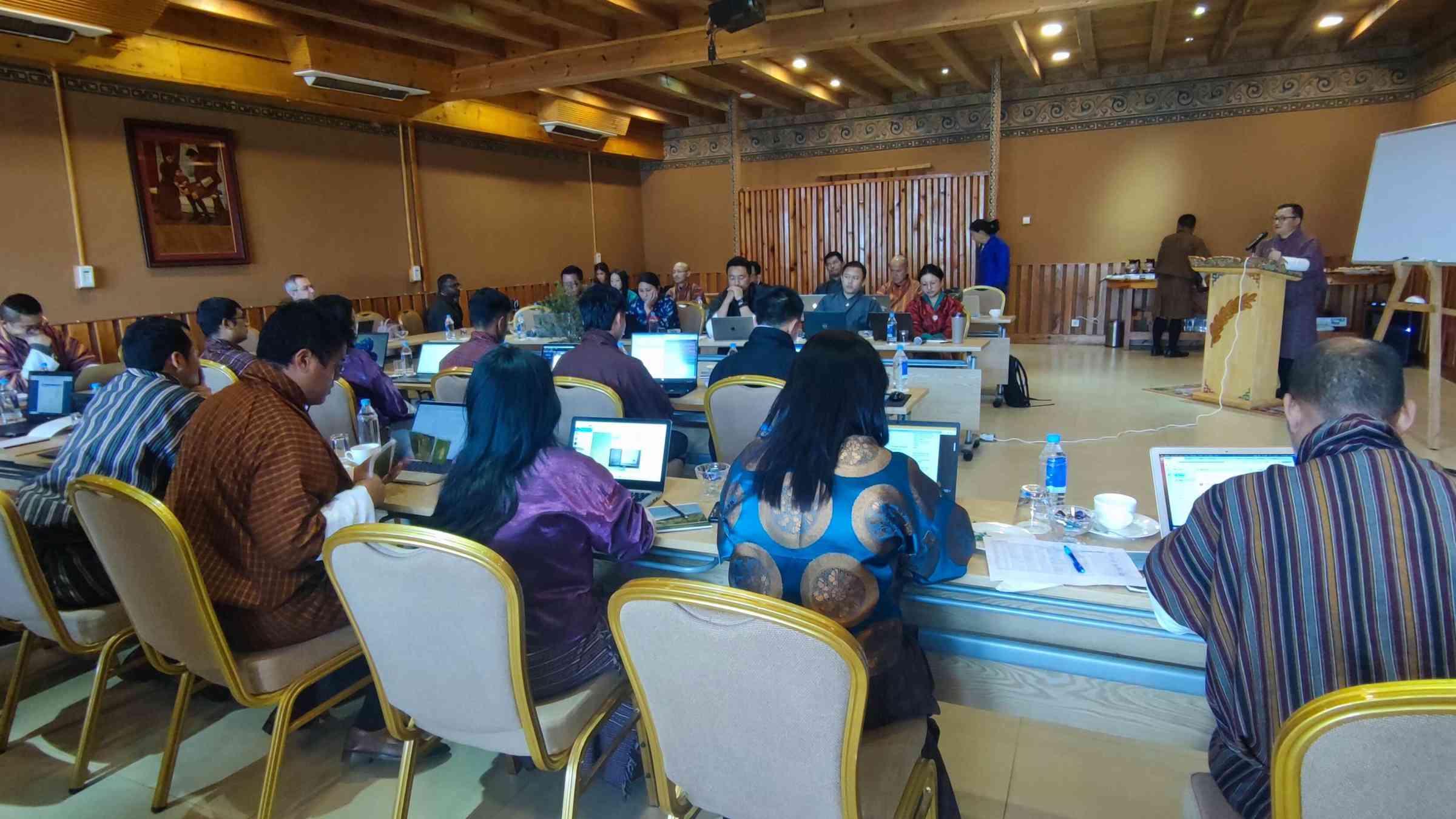CDRI and UNDRR support data-informed decision-making to improve infrastructure resilience in Bhutan

Paro, Bhutan, 15 March – The Department of Local Governance and Disaster Risk Management (DLGDM) of the Ministry of Home Affairs stress-tested Bhutan's critical infrastructure during a 2-day workshop on 14 and 15 March 2024, which is part of the “Enhancing resilience of infrastructure through strengthened governance” project, a pivotal initiative by CDRI and UNDRR.
During these two days, participants identified vulnerabilities and interdependencies within critical economic sectors, allowing stakeholders to understand where to prioritize actions and resources while assessing the current state of critical infrastructure resiliency through a scorecard based on the Principles for Resilient Infrastructure.

In his opening remarks, Mr. Thinley Norbu, Chief of DLGDM welcomed participants inviting them to participate and take advantage of “the timely arrival of this project to work on enhancing resilience of infrastructure, knowing that Bhutan is in the hotspot of disasters”.
During his presentation, Mr. Umamaheshwaran Rajasekar, Urban Resilience Advisor, CDRI mentioned that “risk data can inform country government and sectoral agencies in making informed decisions, especially in terms of addressing major hazards within their investments”. He added that “the Global Infrastructure Risk Model (GIRI) provides this information which is first of its kind and made open for all stakeholders to use to inform their decision-making process”.
In his speech, Mr. Alper Aras, Economic Affairs Officer, UNDRR stressed the importance “to raise awareness of the lack of quantitative data in the region to build macroeconomic models showing the impacts of disaster scenarios on the economy based on disruptions to critical infrastructures.”
Through the course of the agenda, stakeholders from the Ministry of Home Affairs, the National Centre for Hydrology and Meteorology, and the Bhutan Information and Communication Authority, among other ministries, were able to explore the complexities of infrastructure vulnerabilities while getting equipped with invaluable insights essential for informed decision-making.
For example, Mr. Thakur Timsina, assistant ICT at GovTech Agency mentioned that “having maps showing the location of critical physical infrastructure within hazardous areas in the country helped us to better understand the exposure and vulnerabilities of our national infrastructure systems”.
Results from the “Stress Testing Analysis and Principles Scorecard” workshop will be compiled and taken to the Technical Working Group for Infrastructure Resilience (TWGIR) for validation. They will then provide the foundation for government measures to disaster-proof infrastructure systems in the country.